Monasteries
-
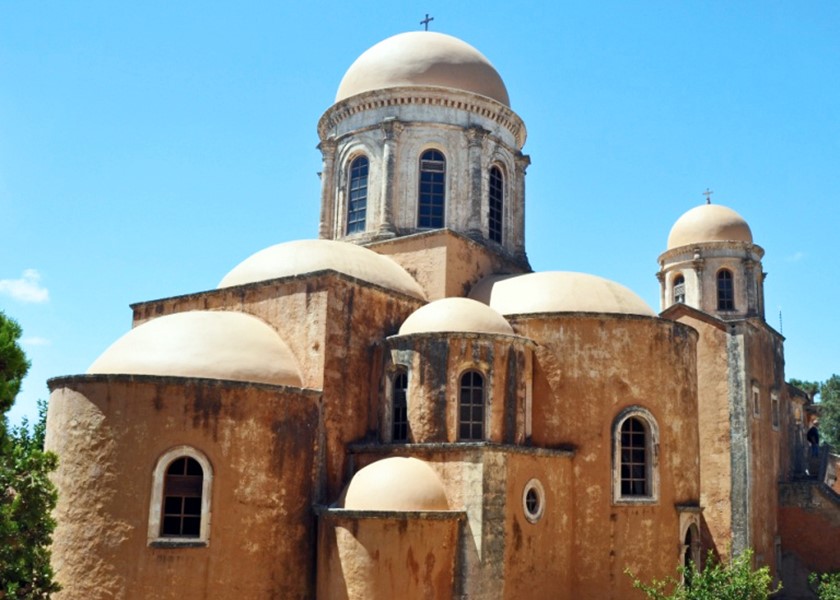
Agia Triada Monastery
is a Greek Orthodox monastery located in the Akrotiri peninsula in Chania.
The monastery, whose name means "Holy Trinity", was built in the 17th century by two brothers of the Venetian Zangaroli family on the site of a pre-existing church.
The monks produce and sell wine and olive oil on the premises.
The church is built in the Byzantine architectural style with three domes. The main church is flanked by two smaller domed chapels, one of which is dedicated to the Life-Giving Spring (ZoodochosPigi) and the other to Saint John the Theologian. The main church is dedicated to the Holy Trinity. There are two large Doric-style columns and one smaller, Corinthian-style column on either side of the main entrance. The facade of the church has double columns of Ionian and Corinthian style and bears an inscription in Greek, which is dated to 1631. The monastery's cellar door is dated to 1613. In the 19th century the monastery was established as an important theological school from 1833. The monastery was later extensively damaged during conflicts with the Turks.
The monastery also has a library which contains some rare booksand a museum which contains a collection of icons and a collection of codices. Important exhibits include a portable icon of St John the Theologian dated to around 1500, The Last Judgment, work of Emmanuel Skordiles from 17th century, St John the Precursor (1846), The Tree of Jesse (1853), The Hospitality of Abraham and The Descent into Hades (1855), The Story of Beauteaus Joseph (1858) and a manuscript on a parchment roll with the mass of St Basil.
(GPS: 35.560637, 24.134686 ) -
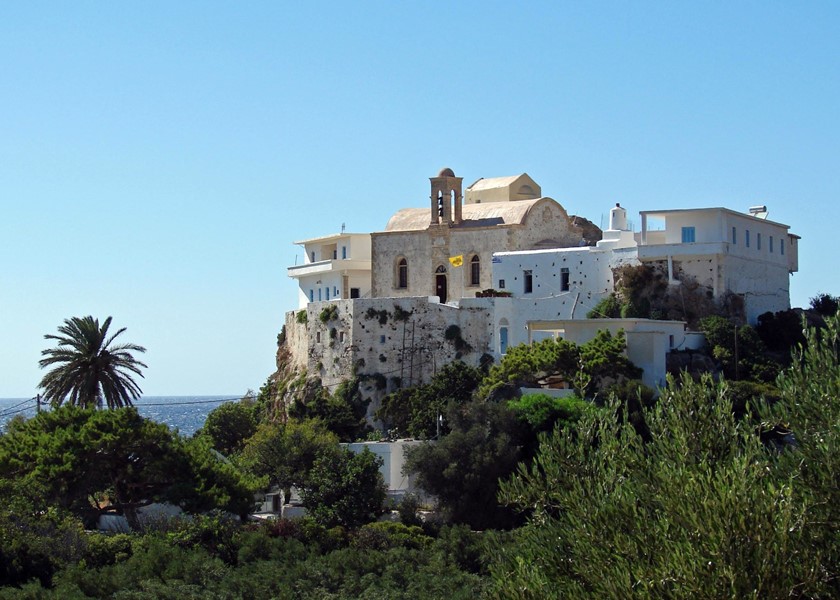
Chrysoskalitissa Monastery
is a 17th-century Orthodox monastery located on the southwest coast of the island of Crete, 72 kilometres southwest of Chania. Built up on rocks 35 metres above the water, it overlooks the Libyan Sea.
The coastal area close to the monastery promontory has several small coves that in earlier times offered welcome landing points for sailors coming to Crete from the west. There archeologists have found interesting remains of late Neolithic and Early Minoan settlements.The monastery is dedicated to the Holy Trinity and the Dormition of Virgin Mary.
(GPS: 35.310661, 23.533608 ) -
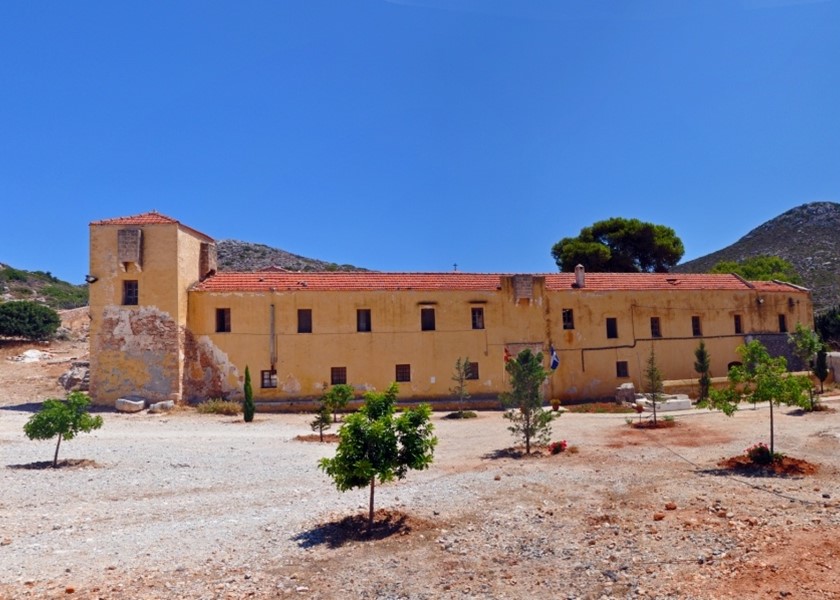
Gouverneto Monastery
is a Greek Orthodox monastery on the Akrotiri peninsula of the Chania. It is located about 30 kilometres from Chania, and is about 5 kilometres north of the Agia Triada Monastery.
Dated to 1537, Gouverneto Monastery is reputed to be one of the oldest monasteries in Crete, and a 1637 census, recorded shortly before the Turkish invasion, revealed that at the time there were 60 monks living there, making it one of the largest in Crete at the time.
During World War II, the Germans established a guardhouse in the monastery to control the area. Since 2005 it has undergone restoration work by the monks. The monastery is a Venetian style fortress with towers at each end, and some Baroque influences added later. It measures roughly 40 metres by 50 metres and contains some 50 monks’ cells on two floors. The chapel in the courtyard is reported to have some of the oldest frescoes in Crete.
To the west side of the monastery there are chape ls dedicated to St. John the Hermit and the Ten Holy Martyrs.
A cave called Arkouditissa, is also located in the vicinity. Here the goddess Artemis was once worshiped. Don’t forget to visit also “Katholiko” monastery 15min away from Monastery of Gouverneto. A hidden jewel accessible only through a footpath.
(GPS: 35.584341, 24.140143 ) -
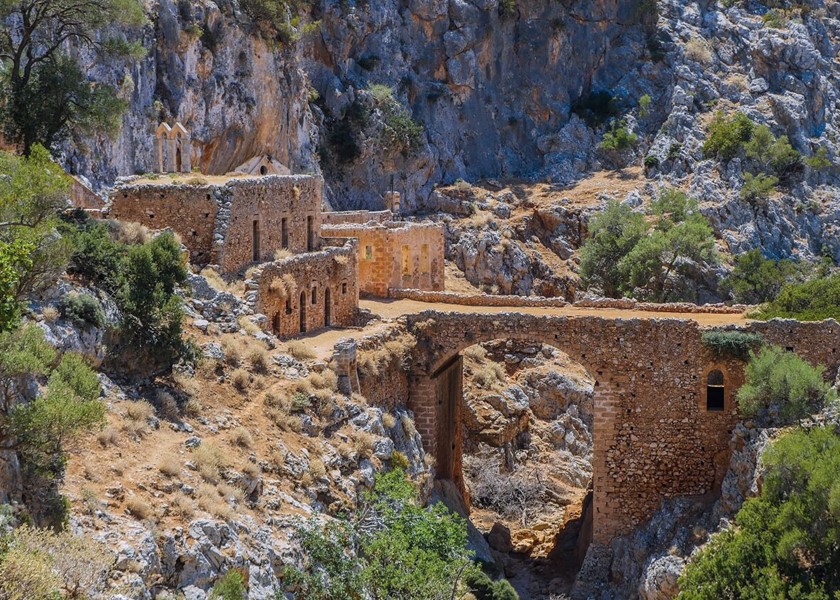
“Katholiko” monastery
“Katholiko” monastery is located on the northside of Akrotiri in Chania, accessible only through a footpath, just 15 min away from Monastery of Gouverneto. It is considered to be the oldest monastery in Crete. The monastery was founded in the 11th century from saint John the Hermit who used to live in a cave nearby. The monastery was abandoned in the 17th century due to continued pirate attacks.
If you keep walking to the sea, you will find yourself in a wonderful small fjord with turquoise waters, where there are the ruins of the old harbor of the monastery.
(GPS: 35.589847, 24.146264 ) -
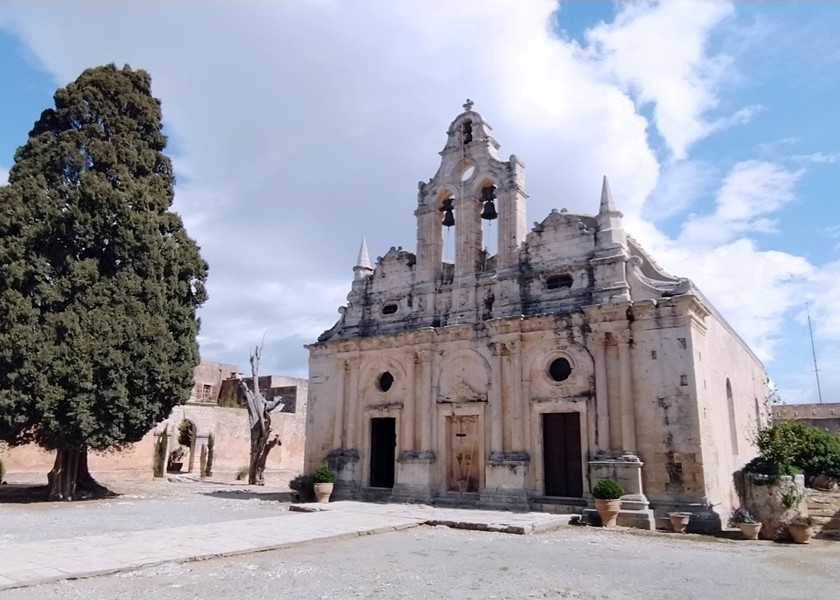
Arkadi Monastery
Arkadi Monastery is situated on a fertile plateau 23 km to the southeast prefecture of Rethymnon. The current church dates back to the 16th century and is marked by the influence of the Renaissance. This influence is visible in the architecture, which mixes both Roman and baroque elements. As early as the 16th century, the monastery was a place for science and art and had a school and a rich library. Situated on a plateau, the monastery is well fortified, being surrounded by a thick and high wall.
The monastery played an active role in the Cretan resistance of Ottoman rule during the Cretan revolt of 1866. 943 Greeks, mostly women and children,sought refuge in the monastery. After three days of battle and under orders from the hegumen (abbot) of the monastery, the Cretans blew up barrels of gunpowder, choosing to sacrifice themselves rather than surrender.
The monastery became a national sanctuary in honor of the Cretan resistance. 8thofNovember is a day of commemorative parties in Arkadi and Rethymno. The explosion did not end the Cretan insurrection, but it attracted the attention of the rest of the world. The exact date of the founding of the monastery is not precisely known. According to tradition, the foundation of the monastery is sometimes attributed to the Byzantine emperor Heraclius and sometimes to the emperor Arcadius in the 5th century.
(GPS: 35.310096, 24.628648 ) -
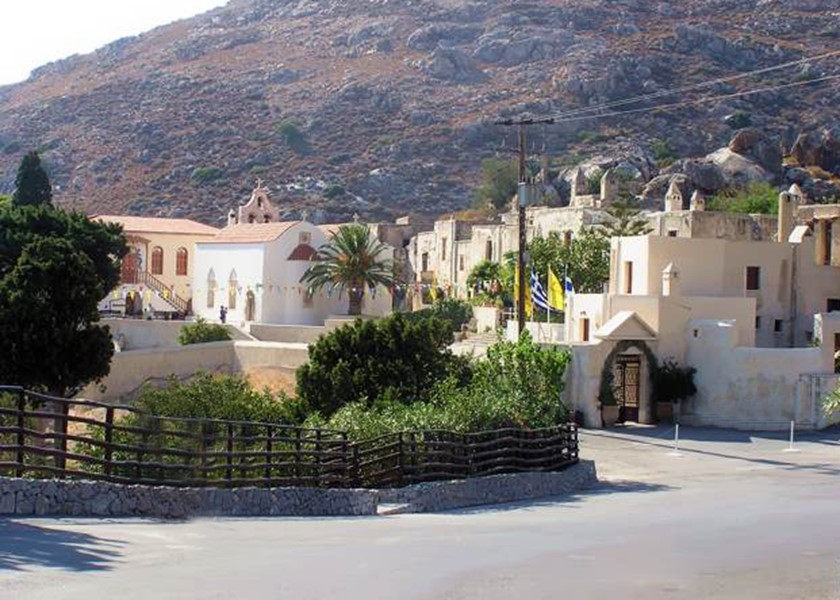
Monastery of Preveli
Situated in the prefecture of Rethymnon, the monastery comprises two main building complexes, the ruined Lower Monastery of St. John the Baptist, and the currently operational Upper (Rear) Monastery of St. John the Theologian. The monastery was probably founded in the Middle Ages, during the occupation of Crete by the Republic of Venice, its founder being a feudal lord named Prevelis. It developed over several centuries as a religious and cultural centre for the local population. After the Ottoman Turkish occupation of the island, Abbot Melchissedek Tsouderos led a group of rebels in the Greek War of Independence in 1821, one result of which was that the monastery was destroyed, but later rebuilt. In 1866 and 1878, the monastery was again active in organising rebellions against the Turks, which helped contribute to Crete's eventual independence and then its political union with Greece.
In the Battle of Crete in 1941, Agathangelos Lagouvardos helped supply British, Australian and New Zealand troops on the island, and provided shelter for them. A group of Australian soldiers protected by the monastery managed to secure their rescue by submarine from the island at Preveli Beach. After this was discovered, the Lower Monastery was destroyed by German forces.
There are also a number of monuments to the work of the monastery during the Second World War, many of them financed by rescued Australian former soldiers.
Don’t forget to visit the beach of Preveli, located very close to the monastery.
(GPS: 35.157633, 24.457028 )
Contact Details
-
Orpheas Resort
- Kavros, Gergiopoupolis, 73007, Crete, Greece
- Tel: +30 28250 61218
- Fax: +30 28250 61007
- Email: info@orpheas-resort.gr
- ΜΗ.Τ.Ε. 1042K014A0172200

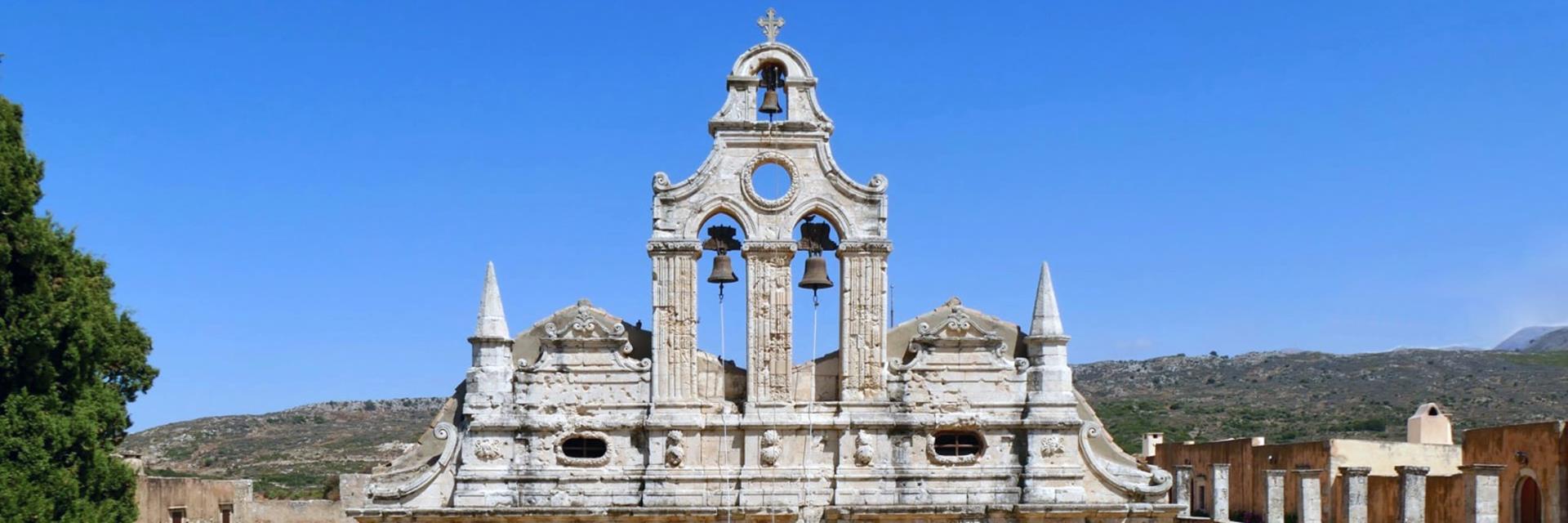



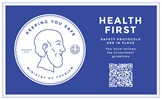


Connect With Us